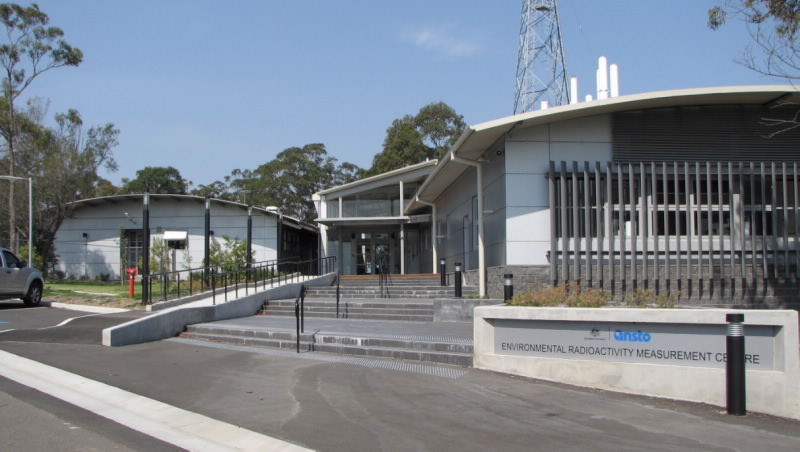The Minister for Industry, Science and Resources, Senator Nick Minchin, today opened ANSTO's new environmental research facility.
 |
| Outside the new environment building. |
The new complex, housing state-of-the-art laboratories, was built to meet growing demand from industry and governments within Australia and around the world for services from ANSTO's Environment Division.
The complex, built at an overall cost of $3.4 million, will be used by the division's 115 scientists and technologists in research in areas including pollution monitoring, climate science, mine site management and rehabilitation, and erosion control.
In opening the facility, Senator Minchin paid tribute to the Environment Division's contribution to the resources industry in minerals processing, management of mine wastes and acid mine drainage.
"It has been estimated that in recent years this work has resulted in economic benefits to the mining industry which have exceeded $100 million annually," Senator Minchin said.
"In short, the work done here at Lucas Heights has the direct effect of increasing our national income."
The environment is the fastest growing source of business for ANSTO. The division's expertise is in high demand both in Australia and around the world. Recent success stories include:
- Identifying a previously unsuspected transport mechanism that may greatly increase generation
- Helping establish the impacts of trace elements carried by tropical rivers on the coasts of Papua New Guinea and the Great Barrier Reef.
- Evaluating the effects of accumulation of metals in crocodiles as a biological monitor of water quality and other environmental factors in northern Australia.
- The use of environmental radiotracers produced in ANSTOs HIFAR research reactor to track pollutants including sewage from ocean outfalls in the coastal zone.
Some major features of the new laboratories include:
Counting Room:
- Analysis (counting) of environmental samples to determine natural gamma-emitting radioisotopes present
- Analysis of samples generated as a result of the operation of HIFAR
- Counting of environmental samples made radioactive in HIFAR. An example is neutron activation analysis (NAA), whereby samples used in mineral exploration are irradiated and their constituent elements identified by their unique radioactive "fingerprints".
- The counting room has been built below ground level to improve temperature and humidity stability, important for electronics associated with counting gamma particles.
White Laboratory:
- Preparation of environmental samples prior to counting
- Encapsulation of samples for NAA analysis
- Preparation of samples for analysis via alpha spectrometry. Blue Laboratory:
- Preparation of samples made radioactive in HIFAR (NAA)
- Radiochemical separation of samples activated in HIFAR
- Preparation of samples, radioactive as a result of HIFAR operation.
Instrumentation Laboratory:
- Development of field instrumentation used to measure environmental processes at mine sites
- Construction of computer-controlled systems to enable automatic measurements to be made at remote locations
- Modification of portable instruments to allow high precision scientific measurements to be made in harsh environments
Radioisotope Tracer Laboratory:
- ANSTOs research and monitoring vessel, Imara.


